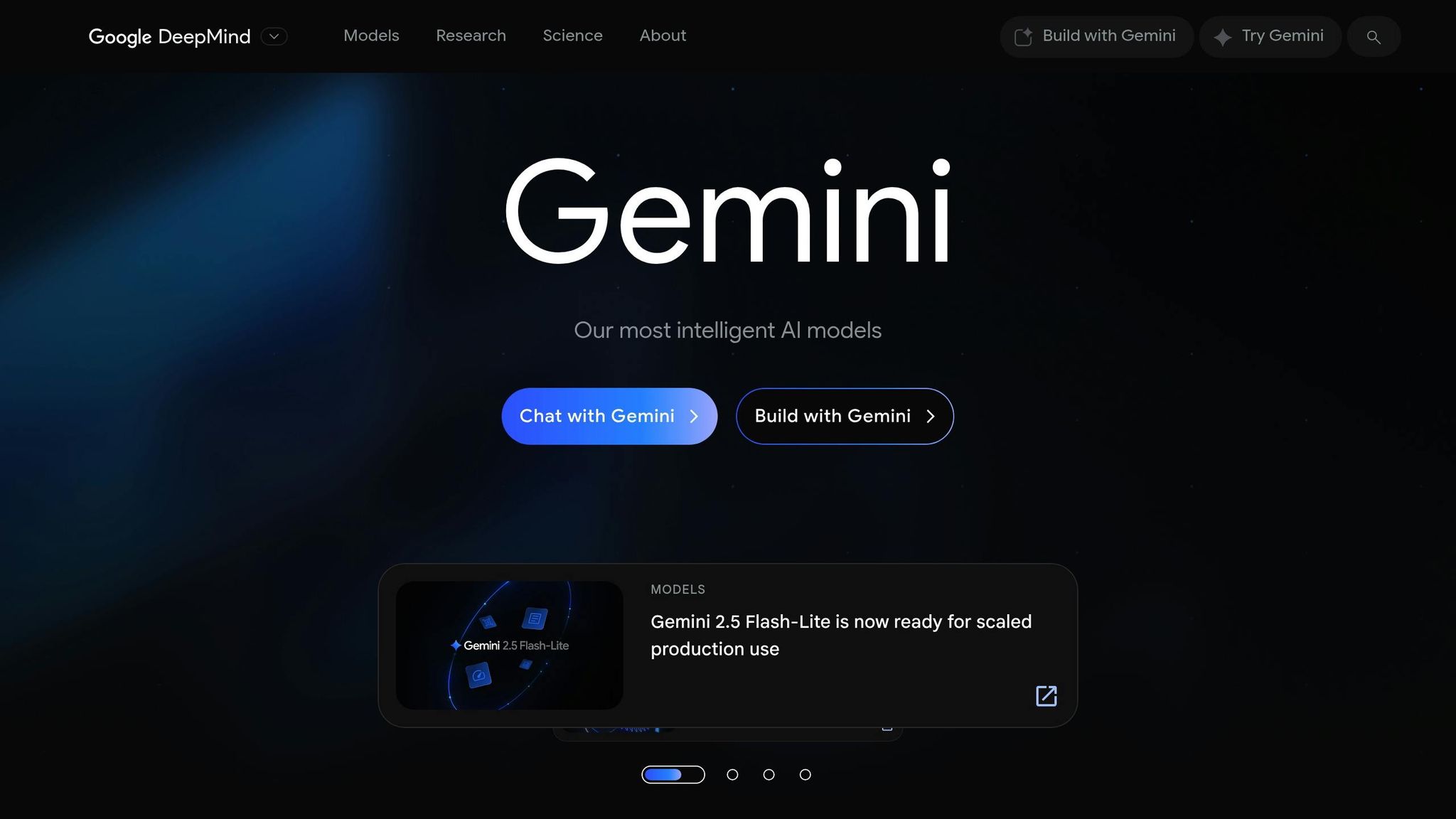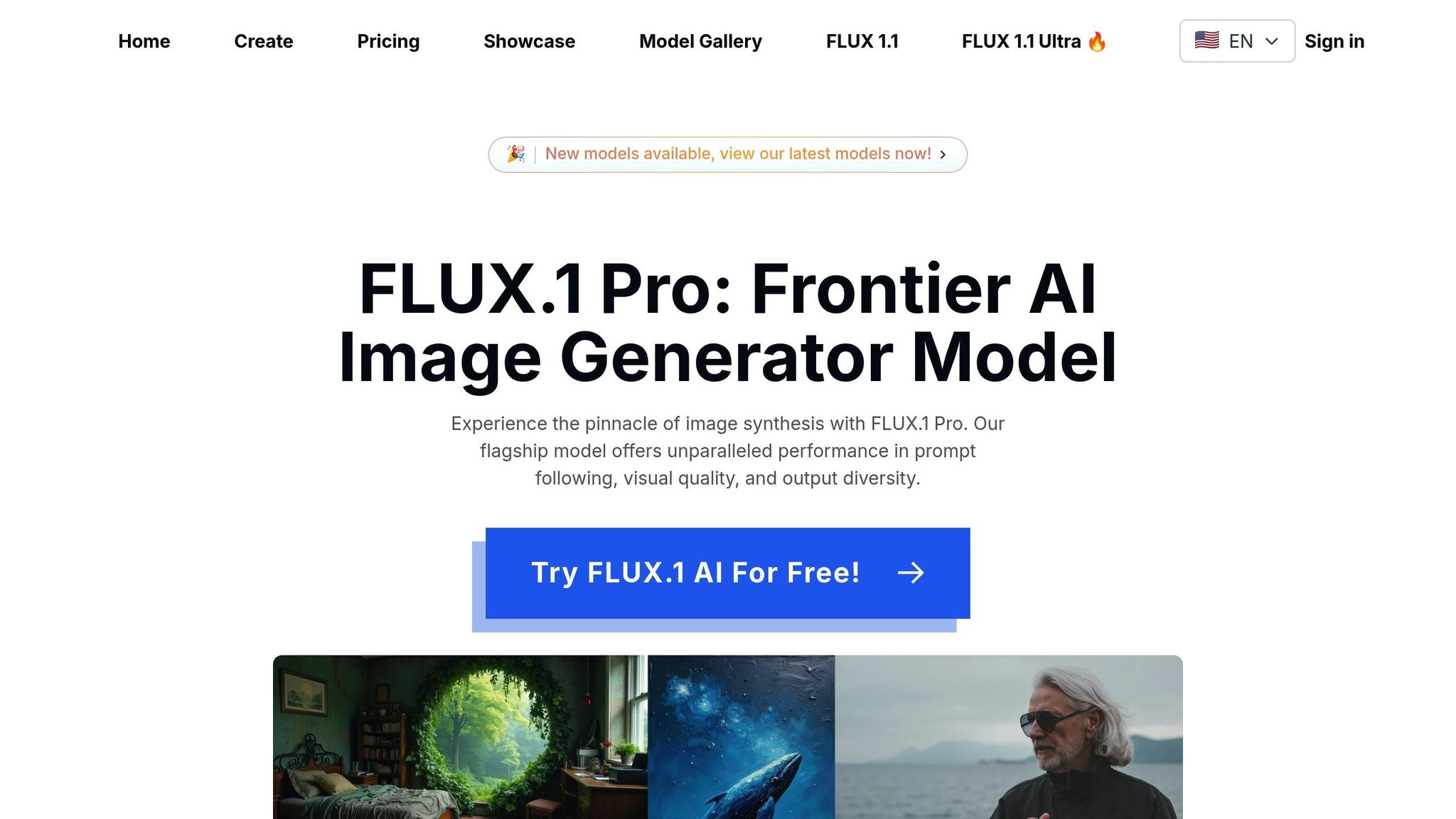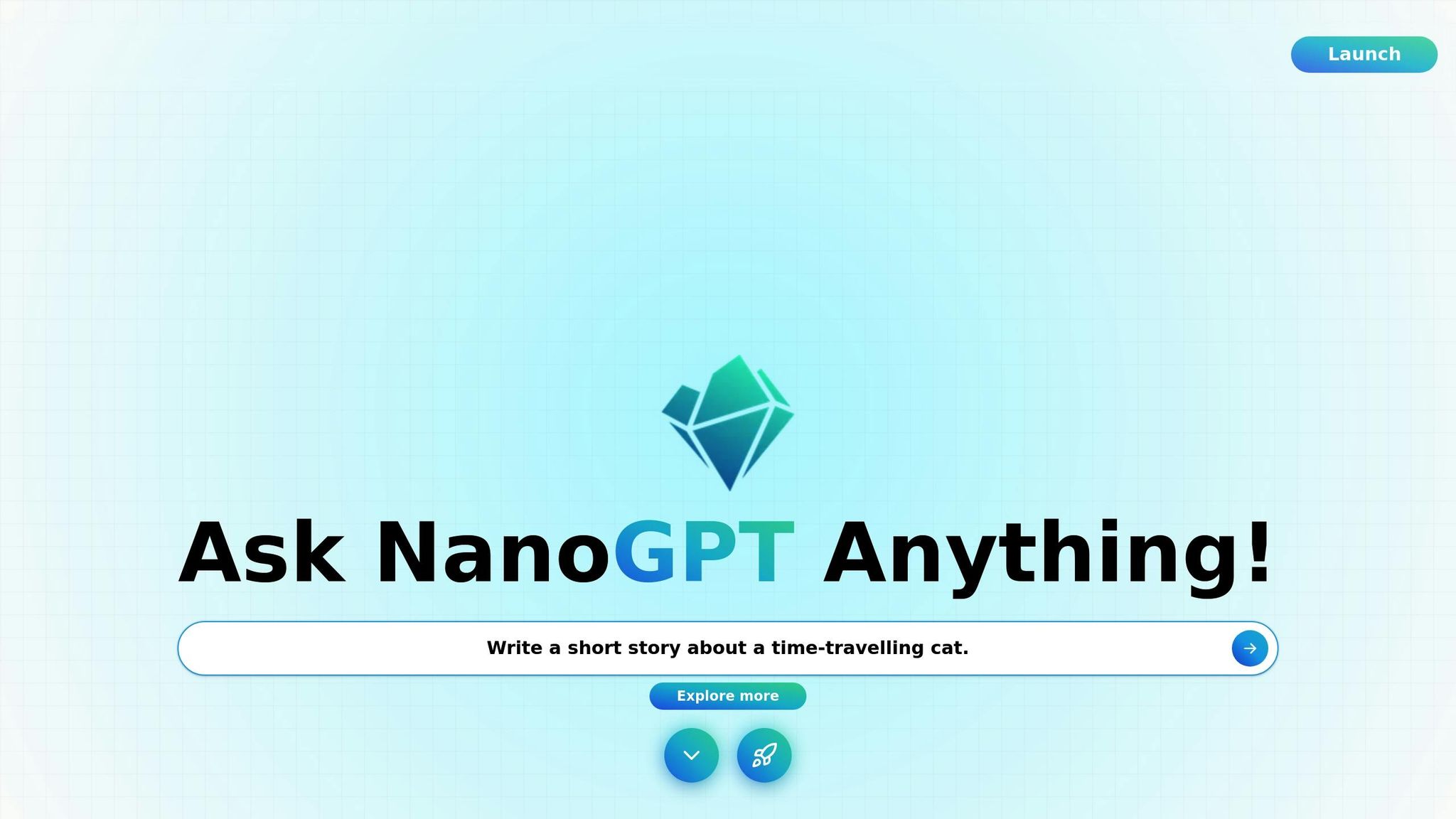Jul 31, 2025
AI is transforming public health by improving disease monitoring, outbreak predictions, and decision-making. However, the cost of adopting AI varies widely, making it essential to evaluate options carefully. This article compares four AI models - ChatGPT, Gemini, Flux Pro, and NanoGPT - focusing on pricing, features, and privacy considerations to help public health organizations make informed decisions.
| Model | Pricing | Key Features | Best For | Privacy |
|---|---|---|---|---|
| ChatGPT | $0–$200/month | Conversational AI, team plans | Text tasks, admin support | Limited HIPAA compliance |
| Gemini | $0.10–$15 per million tokens | Token-based pricing, scalable | Large-scale text processing | Limited sensitive data handling |
| Flux Pro | $0–$22.90/month | Medical and scientific imaging | Visual applications | Decentralized storage |
| NanoGPT | Pay-as-you-go | Access to multiple AI tools | Privacy-sensitive tasks | Strong privacy focus |
AI adoption can reduce costs and improve outcomes, but balancing price, functionality, and compliance is crucial for success. Dive deeper into each model's strengths and limitations to find the best fit for your needs.

ChatGPT supports public health organizations by streamlining tasks like patient education, mental health support, and administrative operations. Its pricing structure plays a crucial role in determining its suitability for healthcare applications. Here's a closer look at its pricing, cost-saving potential, and data privacy features.
ChatGPT offers a tiered subscription system with five distinct plans, ranging from a free option to custom enterprise solutions.
ChatGPT's pricing varies from $0 to over $200 per month, depending on the plan:
For public health departments, the Team Plan often strikes the right balance between features and cost, particularly when collaboration tools and administrative controls are essential for multi-user setups.
ChatGPT's automation capabilities can lead to substantial operational savings by reducing administrative workloads. For instance, studies have shown that it can cut administrative time for tasks like discharge summaries by 70%. In one case, a regional hospital used an AI-driven scheduler to optimize operating room blocks, expanding available OR time by 30%.
The tool also automates documentation, report generation, patient communication, and high-risk patient identification. These efficiencies allow healthcare providers to focus more on patient care while minimizing time spent on paperwork and other administrative tasks.
The Team and Enterprise plans come with advanced privacy and administrative controls tailored to meet the security needs of public health organizations. These plans enable organizations to align data handling practices with HIPAA compliance and internal privacy policies. The Enterprise plan, in particular, offers robust security features and customizable data handling agreements, making it a strong choice for entities with stringent regulatory requirements. These privacy and pricing features establish a benchmark for evaluating other AI solutions in public health.

As financial pressures grow within U.S. public health, Gemini steps in as a cost-conscious AI solution with a transparent, usage-based pricing approach. It offers cutting-edge AI tools tailored for public health, combining free access through Google AI Studio with scalable paid options designed for more intensive healthcare needs.
Gemini uses a pay-as-you-go, token-based pricing system with multiple model variants to address diverse public health requirements. The four main variants include:
Google AI Studio provides free access, making it a practical choice for health departments testing AI or running small-scale projects. For larger-scale needs, the paid tiers offer flexibility, charging based on actual usage rather than fixed monthly fees. This structure helps organizations control costs while scaling up as needed.
Gemini's pricing depends on the selected model and usage volume. For instance:
The Flash models include 1,500 free prompts daily, with additional prompts priced at $35 per 1,000. Meanwhile, the Pro model provides 10,000 free prompts daily. For organizations that need consistent performance, Provisioned Throughput options are available, starting at $1,200 per week for short-term use or $2,000 per month for annual contracts. Additional features like enterprise web grounding cost $45 per 1,000 prompts, while grounding with custom organizational data will be priced at $2.50 per 1,000 requests starting June 16, 2025.
Gemini is optimized for Google's Tensor Processing Units (TPUs), which enhance efficiency and reduce computational costs. Its faster processing benefits public health applications by lowering resource demands. The Med-Gemini model streamlines tasks such as image analysis, report generation, and electronic health record (EHR) data retrieval, freeing up clinicians to focus on patient care. This automation reduces reliance on expensive specialized resources, making it a practical solution for budget-conscious health departments. Compared to competitors like GPT-4V, Med-Gemini achieves a 44.5% higher performance on multimodal benchmarks.
Beyond its cost advantages, Gemini prioritizes data security for public health use. Its specialized healthcare models and continuous learning capabilities ensure patient data is protected while supporting robust population health analytics. The model’s long-context processing feature allows departments to analyze large datasets and research documents without risking data integrity. Additionally, Gemini's multimodal capabilities enable seamless processing of text, images, and audio, all while adhering to strict healthcare privacy regulations.

Flux Pro is an AI-driven image generation tool tailored specifically for public health visualizations. It stands out not just for its performance but also for offering cost-efficient solutions designed to meet the needs of public health campaigns.
Flux Pro uses a credit-based pricing system, offering flexibility through both subscription plans and one-time credit purchases. Here’s a breakdown of the subscription options:
For those who prefer one-time credit purchases, options include 400 credits for $20 or 1,000 credits for $50.
Additionally, pay-per-image pricing ranges from $0.025 to $0.08 per image, which is ideal for organizations with occasional needs for high-quality visuals.
The cost of using Flux Pro for public health efforts depends on the specific model and the volume of images required. For example:
For organizations generating around 5,000 credits monthly, the Standard plan at $9.99/month is sufficient. Larger-scale operations might require the Popular plan at $19.99/month.
Flux Pro offers customizable training sessions to enhance its image generation capabilities. Training costs vary based on session length:
Once trained, generating images costs between $0.06 and $0.07 per image.
Flux Pro’s decentralized infrastructure, powered by FluxDrive Pro, is designed to lower costs while managing large-scale visual content libraries. With access to approximately 12,000 Flux nodes and over 8 petabytes of storage, the system provides a scalable alternative to traditional cloud services.
Key advantages include:
FluxDrive Pro prioritizes security by utilizing IPFS-based decentralized storage, ensuring compliance with HIPAA regulations for handling sensitive health data. Its Web3-powered infrastructure gives public health departments complete control over their visual assets, mitigating risks tied to third-party platform changes or service interruptions. This secure and independent approach is vital for maintaining long-term public health initiatives.

After exploring ChatGPT, Gemini, and Flux Pro, let's dive into NanoGPT, a platform offering a fresh take on AI accessibility and pricing. What sets NanoGPT apart is its ability to provide access to multiple AI models for both text and image generation - all through a single platform. This includes major names like ChatGPT, Deepseek, Gemini, Flux Pro, Dall-E, and Stable Diffusion.
NanoGPT adopts a pay-as-you-go model, skipping the traditional subscription format. This setup is particularly helpful for public health organizations with tight budgets or irregular AI usage needs. Users can get started with as little as $0.10, paying only for the actual usage of AI models.
"NanoGPT's pay-as-you-go model eliminates subscription fees, making advanced AI accessible to any budget." - George Coxon
This approach is ideal for public health teams juggling multiple projects that require different AI tools. Instead of managing multiple costly subscriptions, they can tap into various capabilities as needed, saving both time and money.
NanoGPT's pricing structure helps organizations optimize their budgets by consolidating access to multiple AI models into one platform. This eliminates the need to pay for separate subscriptions, translating into measurable cost savings over time.
NanoGPT is designed with efficiency and accessibility in mind. Its streamlined architecture works well even on devices with limited computational power, cutting down operational expenses. Another advantage is its ability to train on consumer-grade hardware. For instance, training can be completed in just about 3 minutes on an A100 GPU, showcasing its speed and resource efficiency.
Privacy is a top priority, especially for public health applications that deal with sensitive information. NanoGPT addresses these concerns by implementing local data storage practices. None of the prompts submitted to the platform are stored, ensuring user data remains secure. Key details like user settings, conversation history, and balance information are saved locally in the browser, not on external servers. Additionally, NanoGPT avoids linking IP addresses to user activities, offering an added layer of anonymity for researchers and practitioners. This privacy-first approach aligns perfectly with the stringent data protection needs of public health initiatives, while also keeping costs manageable.
Every AI model comes with its own set of strengths and limitations, particularly when applied to public health. Understanding these differences is crucial for organizations to make informed decisions that align with their goals, budgets, and privacy standards.
ChatGPT is widely recognized for its conversational abilities and ease of use. However, it faces significant challenges when it comes to HIPAA compliance.
"ChatGPT lacks HIPAA compliance in its basic form and needs major customizations to handle Protected Health Information (PHI). Patient data leaves your health system's control once it enters ChatGPT, which creates major compliance issues." – Brellium
Gemini stands out for its cost efficiency, with token pricing that is significantly lower than GPT-4. For example, its Gemini 2.0 Flash API charges just $0.10 per 1 million input tokens and $0.40 per 1 million output tokens. Despite these financial advantages, Gemini has limitations when it comes to handling sensitive data.
Flux Pro excels in generating high-quality images and performs exceptionally well in domain-specific tasks, such as medical and scientific imaging.
NanoGPT prioritizes privacy with a flexible pay-as-you-go pricing model, eliminating the need for subscriptions. It does not store prompts, IP addresses, or link usage data to IP addresses. Additionally, it simplifies GPT model training, making advanced AI more accessible.
Here’s a quick comparison of the key features, drawbacks, and best-use scenarios for each model:
| Model | Key Advantages | Primary Disadvantages | Best For |
|---|---|---|---|
| ChatGPT | Intuitive interface, excellent conversational AI | Lacks HIPAA compliance | General text analysis, non-PHI tasks |
| Gemini | Very low token costs, integrates with Google | Limited privacy for sensitive data | High-volume text processing, budget-friendly projects |
| Flux Pro | Exceptional image quality, specialized for medical imaging | Focused on visual applications | Medical imaging, synthetic data creation |
| NanoGPT | Strong privacy focus, no subscription required | Limited market presence as a newer platform | Privacy-sensitive tasks, flexible usage |
While these models offer diverse capabilities, privacy concerns remain a shared challenge. ChatGPT and Gemini, for instance, pose risks regarding HIPAA compliance. Studies also indicate that de-identified data can often be re-identified, raising additional concerns. To mitigate such risks, healthcare organizations must implement robust measures like encryption, strict access controls, and regular security audits. Balancing cost, functionality, and data security is crucial when integrating AI into public health initiatives.
When choosing an AI model, it’s essential to balance upfront costs with the long-term value it can bring. Keep in mind that ownership costs go beyond subscriptions - they also include maintenance, compliance requirements, and potential hidden fees.
For example, a Deloitte Healthcare analysis found that 63% of healthcare AI projects ended up exceeding their budgets by 25% or more due to unforeseen expenses. On the flip side, a study in the New England Journal of Medicine Catalyst reported a 4:1 return on investment (ROI) for healthcare AI projects over three years. Additionally, Accenture estimates that integrating AI across healthcare functions could save the U.S. healthcare system up to $150 billion annually by 2026.
These numbers highlight the importance of aligning the cost structure of AI solutions with the specific needs of your organization.
For large-scale U.S. healthcare organizations with heavy text processing demands, Gemini stands out with its competitive pricing of $0.075 per million input tokens, making it an attractive choice for high-volume tasks. However, potential privacy and compliance risks should be carefully considered alongside these cost savings.
Mid-sized healthcare systems may find ChatGPT’s straightforward pricing structure appealing. Plans start at $20 per month for individual users and scale to custom enterprise options, offering predictable costs.
For organizations focused on privacy and flexibility, NanoGPT’s pay-as-you-go model is worth exploring. It avoids subscription commitments while offering strong data protection. Token prices range from $0.0000 to $0.1004 per million tokens, depending on the model, making it a good fit for variable usage patterns.
If your needs are more specialized, particularly in medical imaging, Flux Pro offers tailored solutions. Its expertise in visual tasks and synthetic data creation can justify the investment for organizations requiring advanced imaging capabilities.
To maximize the value of your AI investment, start small with a proof of concept, scale gradually, and build a solid data strategy. With U.S. healthcare costs projected to rise by 8% in 2025, strategic AI adoption can help deliver measurable efficiencies and better patient outcomes. Ensure your AI strategy aligns with your budget and data security priorities to achieve meaningful improvements in public health.
Privacy plays a crucial role in public health AI applications, as it safeguards sensitive patient information, keeping it secure and confidential. To meet this standard, AI models must adhere to stringent privacy regulations like HIPAA, which are designed to protect health data from unauthorized access, breaches, and risks of re-identification.
When evaluating AI models, it's important to focus on those equipped with strong security protocols and solid data management practices. This approach helps prevent misuse and cyber threats while ensuring ethical and legal standards are upheld - key factors in building trust in public health efforts.
AI models, such as ChatGPT and Gemini, offer public health organizations a way to cut costs by automating repetitive tasks like administrative work. This not only reduces labor expenses but also boosts overall efficiency. In fact, studies suggest that automation in healthcare could save the U.S. up to $150 billion annually.
Beyond cost savings, AI enhances diagnostic accuracy and simplifies operations, leading to fewer expensive errors and less dependence on manual processes. With these financial benefits, organizations can redirect resources to improve patient care and expand services - all without needing to stretch their budgets.
NanoGPT's pay-as-you-go model offers public health departments the freedom to pay solely for the AI tools they actually use. This removes the burden of fixed subscriptions or long-term contracts, allowing for greater flexibility in responding to changing demands.
With the ability to scale usage up or down as needed, departments can match their AI spending to their immediate priorities. This ensures resources are used efficiently and budgets remain intact. It's especially helpful during peak demand periods or when testing out new AI applications.